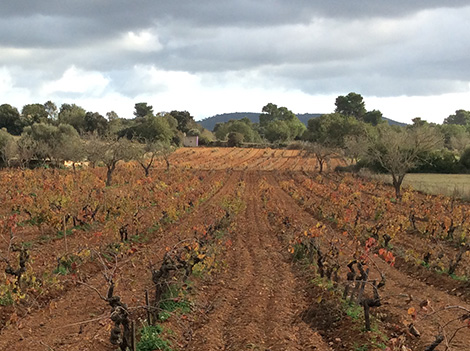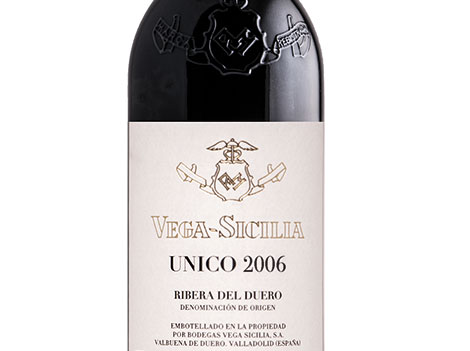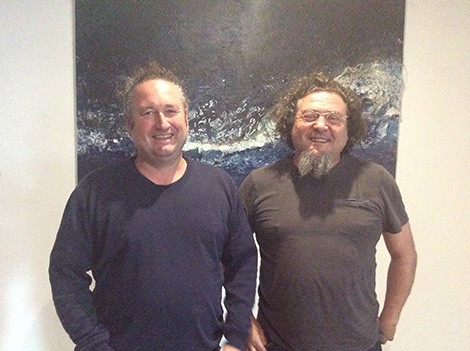
The first vinous clue I came across on a cloudy morning last November, a 20-minute drive east from Palma airport was the once imposing building that used to house the cooperative in Felanitx. After closing its doors in the late 1980s, it now lies in a ruinous state.
Known in Mallorca as es Sindicat, it stands as a testimony of a period of decline in sharp contrast with today’s dynamic wine scene. This renewed moment is the result of major recent investments in ambitious projects including state-of-the-art wineries like Can Axartell, Son Mayol, Es Fangar or Tianna Negre and a shift towards a style that is better adapted to the island’s climate and distinctive features. In Felanitx itself, 4 Kilos has spearheaded the trend towards lighter, aromatic, terroir- driven reds. “It’s time to claim our own Mediterranean style,” says winemaker Francesc Grimalt.
Mallorca’s history condensed in three vineyards
A little over 10 km further inland, we take a walk along the vineyards of Bàrbara Mesquida. As she recounts her family history, the chat turns into an improvised master class on the island’s winegrowing evolution. When her great-grandfather Jaume Mesquida, a peasant in poor rural Majorca, opened a small winery in 1945, vines and fruit trees were mixed in the vineyards as the apricot industry was a major business in the village of Porreres. Bàrbara showed me a 70-year-old vineyard planted in this model and I also had the chance to see similar plots managed by Ánima Negra and 4 Kilos in Felanitx.
Pere Obrador, Ánima Negra co-owner, says most of their traditional vineyards used to belong to peasants who decided to keep the vines for their personal consumption when the cooperative went bankrupt. In those days, EU subsides destined to pull vines meant significant plant losses in the island.
This was the gloomy picture when Bàrbara’s father came back home in the 1980s after studying Oenology in Requena (southeast Spain). He set on making quality wines with French grape varieties pioneering plantings of Cabernet Sauvignon and Merlot in Mallorca. “I grew up with Cabernet and was raised with the idea that Prensal and Callet were useless. Now I only plant indigenous grapes but I would never pull up a 40-year-old Cabernet,” Bàrbara says firmly.
She has recently planted a small plot with Monastrell emulating the old days in the family winery when she was a child (90 hectares are still grown in the Balearics. A striking recent discovery is that Monastrell is a parent of Gargollassa, one of the island’s most promising minor varieties). In her Prensal plot she has recovered the methods of the old days and has planted apricot trees among the vines. “Trees foster biodiversity and generate competition among crops”, adds Bàrbara, a committed biodynamic grower. At 4 Kilos, Francesc Grimalt believes that “this competition particularly benefits the local red grapes.”
An island of wine?
With 1,937Ha under vine, vineyards barely cover 1% of the islands farming land, according to the 2015 Vineyard Surface Survey. Mallorca is home to most of the vineyards and geographic indications in the archipelago. The two DOs in the island are located in traditional wine growing areas: Binissalem occupies the higher, central part while Pla I Llevant spreads over southern and eastern areas. The ports of Palma and Portocolom acted as traditional departure routes for their wines respectively. Mallorca lived its heyday around 1890, just before phylloxera reached the island –at the time surface under vine exceeded 30,000Ha.
These days you could easily go on a long holiday to Mallorca without seeing a single vine. My recommendation to wine lovers willing to discover the farming core of the island is to travel along the road between Manacor to Porreres passing through Villafranca de Bonany while enjoying the gentle slopes planted with Mediterranean crops.
Other traditional wine growing areas include Pollença with Alcudia as its flagship port and Banyalbufar where Malvasía was grown on steep terraces overlooking the sea. Its wines, particularly sought-after in the past, are being recovered by some producers (and not only the sweet version). These two villages are now part of IGP Serra de Tramuntana, stretching across the northwestern coast. The name of the IGP refers to a northern wind which is a major influence in the island’s climate.
Some of the most interesting wines are sold as IGP Mallorca and long-standing producers like Ribas have opted out the appellation system. During my visit to the island, several producers admitted that DO Binissalem regulations are constraining: a minimum of 30% Manto Negro is compulsory in red wines and 50% of Prensal Blanc in whites.
A “selfish” market
Vineyards may not be openly visible to tourists, but wines are widely available in local restaurants. In fact, the buoyant tourist industry consumes most of the local production, making it difficult to find Mallorca wine abroad or even in mainland Spain. Except for well-established, widely distributed brands like Ánima Negra or 4 Kilos, producers are largely unknown to the Spanish consumer. It seems that Mallorca is the best place to drink the wines of Mallorca.
In terms of style, terroir-driven wines made from indigenous grapes coexist with commercial brands and wines meant for international consumers. Prensal could be considered as Mallorca’s white commodity. "To enter the white category, wines must retail below or above Prensal," explains veteran merchant Juan Luis Pérez de Eulate from La Vinoteca wine store in Palma.
Producers typically work both styles. It is the case of Miquel Gelabert, who makes 60,000 bottles in Manacor: Chardonnay is his most popular wine, but those looking for something with a local flavour will prefer Sa Vall, made from the Giró Ros grape variety. Investor-backed wineries with a strong commercial focus like Tianna Negre in Binissalem (owned by Túnel, a leading liquor producer and distribution group), or Can Axartell in Pollença (backed by German cosmetic entrepreneur Hans-Peter Schwarzkopf) are also recovering indigenous grapes.
From local to international grapes and back again
As in the Canary Islands, isolation has proven highly effective to preserve genetic diversity, but indigenous grapes in the Balearics have experienced further regression.
According to El viñedo español (The Spanish Vineyard), published by the Spanish Agriculture Ministry in 1975, Felanitx (what is known today as Pla I Llevant) boasted 2,553Ha under vine of which (and this is striking) 55% were Fogoneu, 12% Fogoneu Francés, 16% Callet and 12% Manto Negro. In Binissalem (1,708Ha) Manto Negro (50%) was the main grape followed by Callet (25%), Fogoneu (15%) and white Prensal (5%).
Forty years later, the picture shown by the 2015 Vineyard Surface Survey in the Balearic Islands is rather different. White grapes have gained presence with Chardonnay covering 150Ha (almost 8% of the total surface under vine), followed by Prensal with 145Ha (7.5%). Regarding red varieties, Manto Negro represents 17% (335Ha) but international grapes come very close. In fact, Cabernet Sauvignon (300Ha, 15.5%), Merlot (almost 200Ha, 10%) and Syrah (162Ha, 8%) have overtaken Callet (154Ha, below 8%).
Fogoneu, a grape considered by Grimalt as the great hope against climate change given its very low pH, has dropped to 15Ha. Other offbeat varieties like the red Gorgollassa —recovered by Ribas from only three remaining plants in Mallorca—, and Malvasía de Banyalbufar (identical to the Malvasía de Sitges in Catalonia and recently named Malvasía Aromática) cover six and 17Ha respectively.
Recovering traditional grapes is not easy as it is becoming increasingly difficult to find virus-free vegetal material for clonal selection. In Binissalem, Ribas has identified some virus-free plants in one of their oldest Manto Negro vineyards after years of failed attempts. Other producers decide to take in the virus as part of the plant and perform massal selections to replicate the genetic diversity found in old plantings.
Rioja producer and researcher Pedro Balda, who is currently recovering grape varieties at the University of Baleares, generously let me taste three experimental micro-fermentations of Esperó de Gall (good acidity), Vinater Blanc (interesting aromatics) and Malvasía from Inca in central Mallorca. Given it is the same grape variety its fragrant, vibrant acidity reminded me of Malvasía grown in Penedès (Catalonia). And at Tianna Negre I was given two interesting samples of Giró Negre (Red Giró), one made with destemmed grapes, the other one fermented with whole clusters.
Increasing diversity of styles
A great deal of the wine currently made in Mallorca blends indigenous and international grapes both on entry-level and top brands (Binigrau is a good representative of this style). Single varietal, well-known brands made with international grapes are still being sold —even new brands have been released and Son Mayol, an ambitious project near Palma, strictly replicates the Bordeaux model— but the general trend is to explore Mallorca’s distinctive local varieties.
A volume player like José Luis Ferrer has launched Ferreret, a limited range of single-varietal reds made from Manto Negro, Callet and Gorgollassa. And Vins de Tramuntana, a relatively new producer in Pollença, has bet on Gorgollassa for Sibila, one of its top (and delicious) reds. Although Ribas has discontinued their single-varietal Gargollassa, I was able taste an expressive barrel sample showing plenty of finesse.
In general, as international grapes are disposed of or their percentage reduced in the blend (particularly if ripeness was high), wines gain in expression and become increasingly fragrant and less structured.
Felanitx has traditionally been the capital of the Callet variety and Binissalem of Manto Negro. 4 Kilos and Ribas respectively have led the way in terms of finesse, but more and more producers are joining in the trend. The best whites I tried like Torre des Canonge from Toni Gelabert were made from Giró Ros, but Malvasía, a grape that loves the proximity of the sea, should add plenty of joy to Mallorca’s whites in the future.
Clearly, the best wines made from indigenous grapes come from carefully tended vineyards. They have left behind the lightness and dull flavours of high-yielding Callet for instance or the rustic edge that still appears in many single varietal or Manto Negro-based blends. Furthermore, local varieties are better adapted to the island’s climate and can cope with the two rain-free months that coincide with the later stages of ripening.
Xylella fastidiosa, an unexpected threat
Arguably, the darkest shadow hanging over the future of Majorcan wines is xylella fastidiosa, the devastating bacteria behind Pierce's disease in California, and a great threat to woody crops.
In Spain, the Balearic Islands is the only region to have been affected so far. After affecting various types of trees, the first outbreaks in vines were detected in Mallorca in 2017. As insects carry the disease, part of the preventive measures include extra controls with crop covers and, in many cases, the removal of green edges. Many winegrowers reject this measure —in their view, these edges increase biodiversity and offer a habitat to predators that can naturally control plagues in their vineyards.
At the beginning of 2017, plant material except for seeds was banned from leaving the islands. Vine plantings have been possible after that thanks to Viveros Villanueva, a nursery which moved part of their staff from their base in Navarra to graft plants on site.
Next week we will publish a second article in SWL focused on some of the most relevant producers in Mallorca.
A GUIDE TO LINEAGES AND PARENTAGES OF BALEARIC ISLANDS VARITIES
According to a research paper published in May 2011 by Springer Science+Business Media B.V.*, grape varieties grown in the Balearic Islands originate from migrations occurred in three periods of history (Islam expansion on the 7th century, the development of the kingdom of Aragón between the 13th and 15th centuries and the phylloxera crisis in the late 19th century) and from natural crosses in the islands. This information is of great help to shed some light on grape movements in the western Mediterranean region.
66 samples corresponding to 32 different genotypes were analyzed. All of them were collected in the Balearic Islands and are stored in two germplasm collections: Finca El Encín in Madrid and Palma’s Collection.
The research identified two gene pools as well as a key variety in several crosses that occurred in the archipelago. Hebén, a variety that was present in the Spanish and French Mediterranean basin, conforms the first lineage, based on exogenous grapes. Meanwhile, ESperó de Gall and Gorgollossa are the result of crosses between Hebén and Monastrell which are likely to have occurred at different times. Hebén and Albillo Mayor were identified as parents of Vinater.
The second lineage was created in the archipelago and is focused on a key variety that has been provisionally named Callet Cas Concos. Manto Negro is the result of a cross between this cultivar and Sabater, but other crosses with Fogoneu resulted in Callet and Gafarró. Additionally, Callet Cas Concos is a descendant of grapes that were spread over different areas of the Mediterranean basin: Beba, a table grape known as Calop Blanco in the Balearics and Panse de Provence in France which is believed to have originated in Turkey or the north of Africa, and Giró Ros (the same as Giró Sardo in Sardinia). Finally, Fogoneu comes from a cross between Escursac and Mancès de Capdell. It is believed that Giró Ros, Escursac and Mansés de Capdell could share a Greek origin.
*Grape varieties (Vitis Vinifera L.) from the Balearic Islands: genetic characterization and relationship with the Iberian Peninsula and Mediterranean Basin. Authors: Sonia García Muñoz, Thierry Lacombe, M. Teresa de Andrés, Laura Gaforio, Gregorio Muñoz-Organero, Valérie Laucou, Patrice This, Félix Cabello.

Amaya Cervera
A wine journalist with almost 30 years' experience, she is the founder of the award-winning Spanish Wine Lover website. In 2023, she won the National Gastronomy Award for Gastronomic Communication
Who is who in Mallorca’s wine scene
NEWSLETTER
Join our community of Spanish wine lovers






